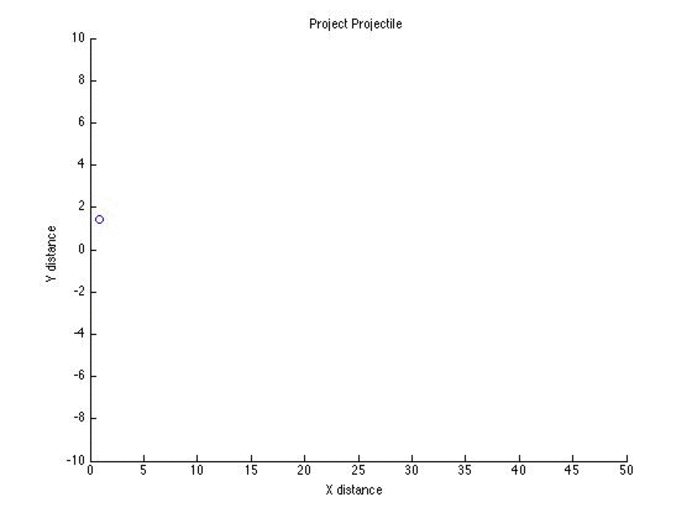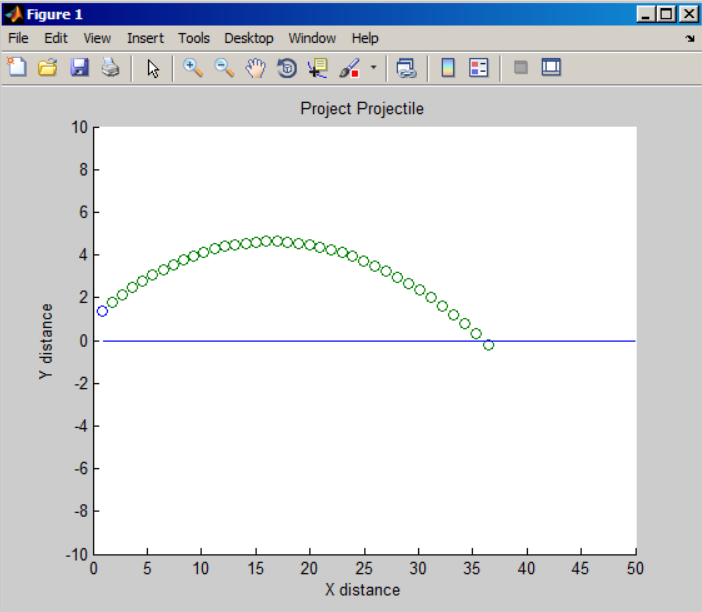Alex Molina & Kadeem Nibbs
Computational 375 – Project
GOAL: Week 1: The setup. Establishing the arrays, the initial variables and conditions.
This week we worked on modeling the long jump via MATLAB since we are interested in exploring realistic projectile motion and human acceleration as it pertains to the human body. For this week, we looked to create a baseline code modeling a point particle with air resistance(drag force) and gravity acting on it.
We want to explore the effects of proper body position on the traveled distance in the long jump, so modeling after Chapter 2: Projectile Motion, we worked to generate a realistic curving point through Earth’s atmosphere. Our goal to set a baseline is complete. For the upcoming weeks, we will work to add air resistance and friction in effect. To make the point particle even more interesting, we will start to add cylindrical and spherical shapes in order to resemble a more humanistic body and interesting projectile.
Important Equations:
Drag Force of Air:
![]() Drag Force of Air in the x direction with the x component of velocity
Drag Force of Air in the x direction with the x component of velocity
![]() Drag Force of Air in the y direction with the x component of velocity
Drag Force of Air in the y direction with the x component of velocity
![]() Important Links:
Important Links:
MatLAB code and other essential information can be found at:
https://drive.google.com/a/vassar.edu/folderview?id=0B6loGd4o7iESfjNoRnVmSjJDNHlabG9qNEJIRmY1Z1JEeS1QNE9rTjlIY2Vqc1NMTWlwdEk&usp=sharing
References:
Giordano, Nicholas J., and Hisao Nakanishi. “Chapter 2: Realistic Projectile Motion.” Computational Physics. 2nd ed. Upper Saddle River, NJ: Pearson/Prentice Hall, 2006. Print.
Our Resulting Projectile Motion via MatLAB (GIF):
We saved the 40 different jpg files from MatLAB and used a gif generator to make this. It did however erase the line and motion at each point.

Our Resulting Projectile Motion via MatLAB (Actual):
UPCOMING: Week 2: Run simple trial with one-dimensional object in two-dimensional space with air resistance. Then second trial with a mass-less two dimensional object in 3-dimensional space.


Good start with a simple model that you can build on. Also, you did a very good job with including comments in your code. It is not clear in your write up on the blog what your physical parameters and assumptions are for your model. I am looking forward to those details and the evolution into a more realistic model.